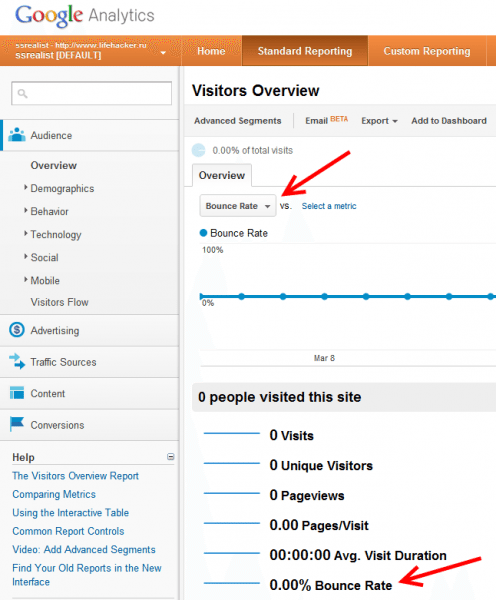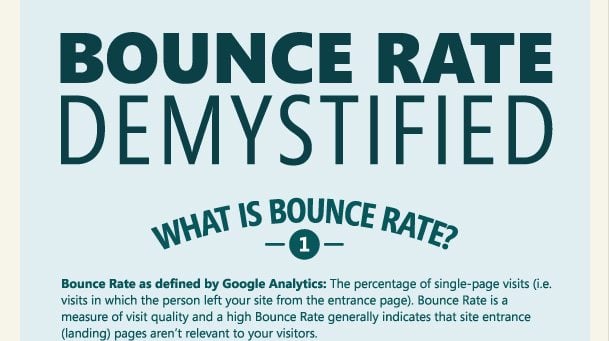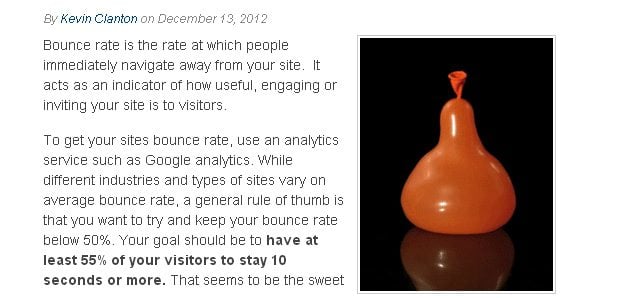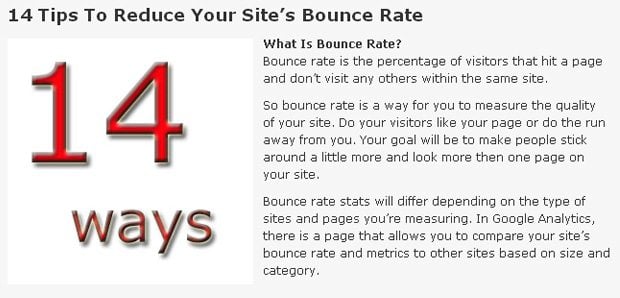Optimizing Your Store: Bounce Rate [S02.E02]
"How many people google something then leave the page without clicking?" This is a very good question, website owners should do all efforts they can to arouse interest in every user's mind...
Couple weeks ago we've started a series of articles dedicated to optimization of online stores. We've already covered some of the following themes:
- Understanding Online Store Performance. Key Metrics.
- Optimizing Your Store:
- Conversion Rate;
- Bounce Rate;
- Shopping Cart Abandonment Rates;
- Add to Cart Rates;
- Email Marketing;
- Re-targeting.
And now it's time to speak about the Bounce Rate.
***
Bounce Rate is an extremely important and most easiest way to determine "attractiveness" of your website to visitors. In fact, bounce rate is a percentage of visits by a single user who came and left your website after watching only one page.
Rb = Bounce rate
Tv = Total number of visitors viewing one page only
Te = Total entries to page
As a rule high bounce rate indicates that the content of pages does not correspond to the needs of your visitors. One of the most popular options for reducing your bounce rate is link each page to specific keywords, what makes page description consistent to its content.
Most known problem of Google Analytics is its method of calculating the time visitors spent on a website. Time spent on the site - is a period when the visitor entered your website up to the moment he/she closed the last page of your site. Let’s consider two situations that illustrate the problem with the calculation of time spent on the website:
Situation #1
A visitor came to your website. For 3 minutes, he/she was reading an article on a page, liked it, bookmarked the page and closed it. So what's the problem? This visitor is not interacting with the page that is not doing nothing, visitor was just reading it. For Google it’s bad, Analytics will record the time spent by that person on the site, as 0 minutes 0 seconds. This record will have a negative influence index of average time spent on your site.
Situation #2
Some visitor came to your site and even followed the cross-link from the first opened page to another one. Total time spent on reading these two pages is somewhere six minutes. However, Google Analytics will count only the period of time when the visitor entered the first page till his last interaction with another one page.
In other words:
- visitor read the first page for 3 minutes;
- passed on to another page;
- read it, for 3 minutes;
- closed the page;
Google will only count the time from the entrance to the site to the point where he moved on to the second page . All the time user was read the second page before closing the page does not count.
Here you can find more info on how Google Analytics counts out your website stats.
Solution #1
Use Google Event Tracking API, it will report every 10 seconds to Google Analytics that visitor is still on our website. The API will will increase index of time spent by any user on your website and will and will not equal such visits to the bounce, thus creating more precise image of the user activity on your website.
Here is a code snippet that needs to be placed into every page you’d like to track. It makes no difference which version of the tracking code you are using.
<script type="text/javascript"> // <![CDATA[( (function (tos) { window.setInterval(function () { tos = (function (call) { return t[0] == 50 ? (parseInt(t[1]) + 1) + ':00' : (t[1] || '0') + ':' + (parseInt(t[0]) + 10); })(tos.split(':').reverse()); window.pageTracker ? pageTracker._trackEvent('Time', 'Log', tos) : _gaq.push(['_trackEvent', 'Time', 'Log', tos]); }, 10000); })('00'); // ]]> </script> |
Solution #2
In fact, it’s enough to report to Google Analytics that user is still here, all that is left to determine the interval of time spent on your website, which you consider to be useful. Like the previous script, the code is to be inserted into all pages before the closing tag.
<script type="text/javascript"> // <![CDATA[ (function (tos) { window.setTimeout(function () { tos = (function (t) { return t[0] == 50 ? (parseInt(t[1]) + 1) + ':00' : (t[1] || '0') + ':' + (parseInt(t[0]) + 10); })(tos.split(':').reverse()); window.pageTracker ? pageTracker._trackEvent('Time', 'Log', tos) : _gaq.push(['_trackEvent', 'Time', 'Log', tos]); }, 20000); })('00'); // ]]> </script> |
This example also significantly reduces the bounce rate, and does not overload the page with excessive number of periodic queries.
Do We Need It?
Is it worth spending your time and effort trying to decrease the bounce rate of a site and increase the time spent on the site? The answer is very simple: if you want your site to hit the top of search engines in like...never, and you want your potential visitors not to be able to find it through the search, then there is no need for you to worry about these parameters.
It is really important to understand that at this very moment three major behavioral factors that influence position of your website is the number of pageviews per visitor, bounce rate and time visitors spent on the site. Improvement two of these three parameters guarantees you an increase of ranking of your website in search engines, what directly affects site’s positions in the search query, and therefore, number of visits.
Couple More Resources for You
Content Performance
***
Reduce the Bounce Rate of Your Blog
***
The Art & Science of Seductive Interactions
***
Google Analytics 10-Step Audit
By from Michael Stricker
***
Reverse the Bounce Rate on Your Blog – Here’s How
Bounce rate may not lie to you but there is a chance that you will be deceived by it. Bounce rate can be simply defined by saying that it is the number of people who land on your site and leave without visiting any other page.
***
How to Reduce Bounce Rate & Speed Tricks
Bounce rate is the rate at which people immediately navigate away from your site. It acts as an indicator of how useful, engaging or inviting your site is to visitors.
***
14 Tips To Reduce Your Site’s Bounce Rate
What Is Bounce Rate? Bounce rate is the percentage of visitors that hit a page and don’t visit any others within the same site.
***
SPEAK UP!
Now it’s your turn to speak. If you have an online store, informational website or a blog what kind of optimizations you implement? Do you keep an eye on your Bounce Rate figures?
Get more to your email
Subscribe to our newsletter and access exclusive content and offers available only to MonsterPost subscribers.





Leave a Reply
You must be logged in to post a comment.